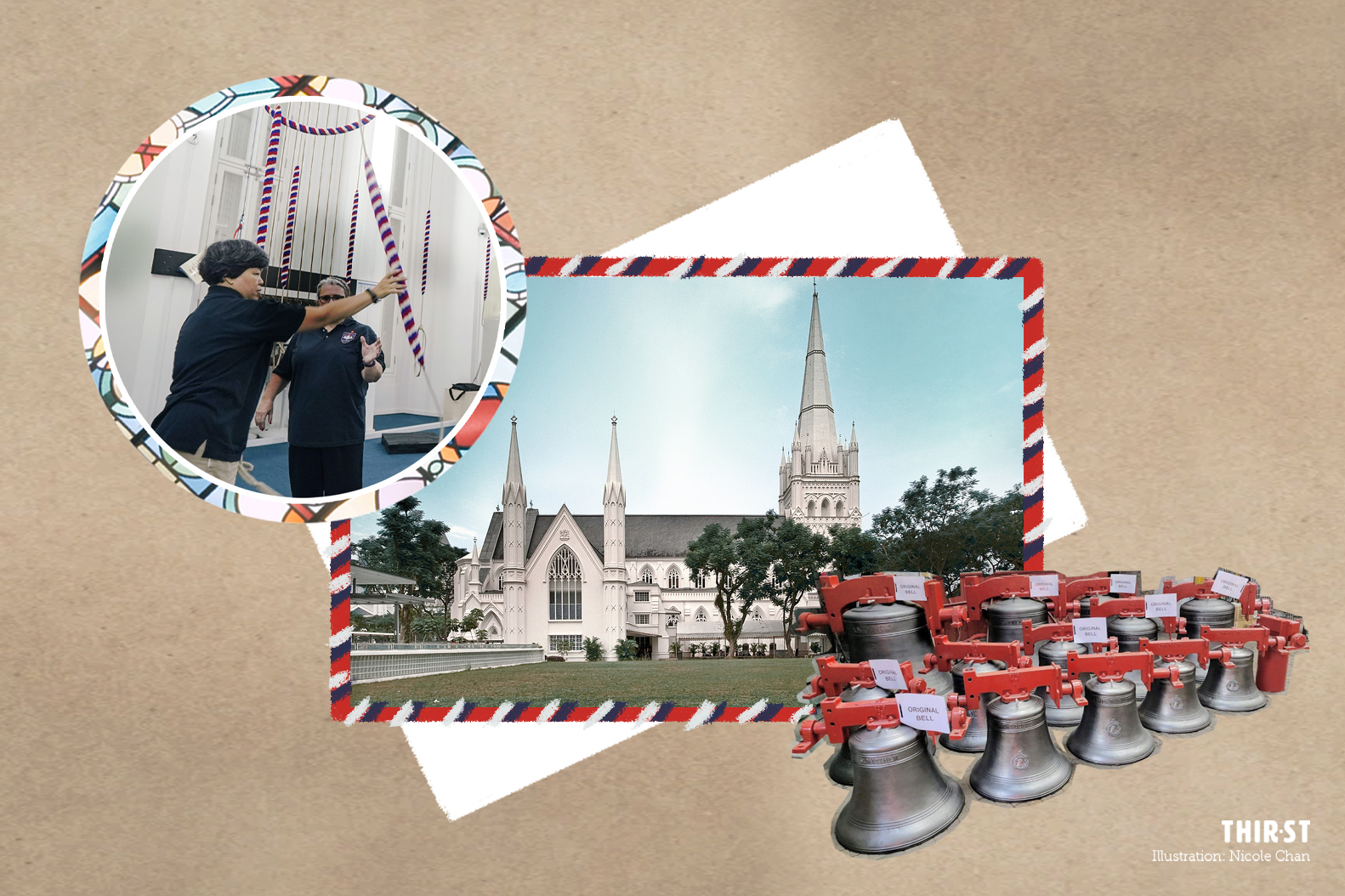Imagine this: You happen to be at City Hall at midday and you stop to admire the neoclassical architecture of an era bygone in between appointments. All of a sudden, you’re surprised by what seems to be bells ringing.
These are not traditional ice-cream cart bells, tempting you to buy a dessert under the hot sun. These are the church bells from St Andrew’s Cathedral (SAC).
In an effort to rally believers across Singapore to pray for the nation in light of COVID-19, it was announced on February 18 that the bells at SAC would ring at 12pm every day as part of the PraySingapore@12 movement.
At its loudest, the sound of the bells can even be heard at Marina Square. But perhaps not many know that these bells, which originated in England and can weigh up to 1,300kg, have an interesting backstory.
As we spoke to different people and discovered for ourselves, we couldn’t help but see the hand of God in preparing SAC for its role in calling the wider Church to unite in worship and prayer for such a time as this.
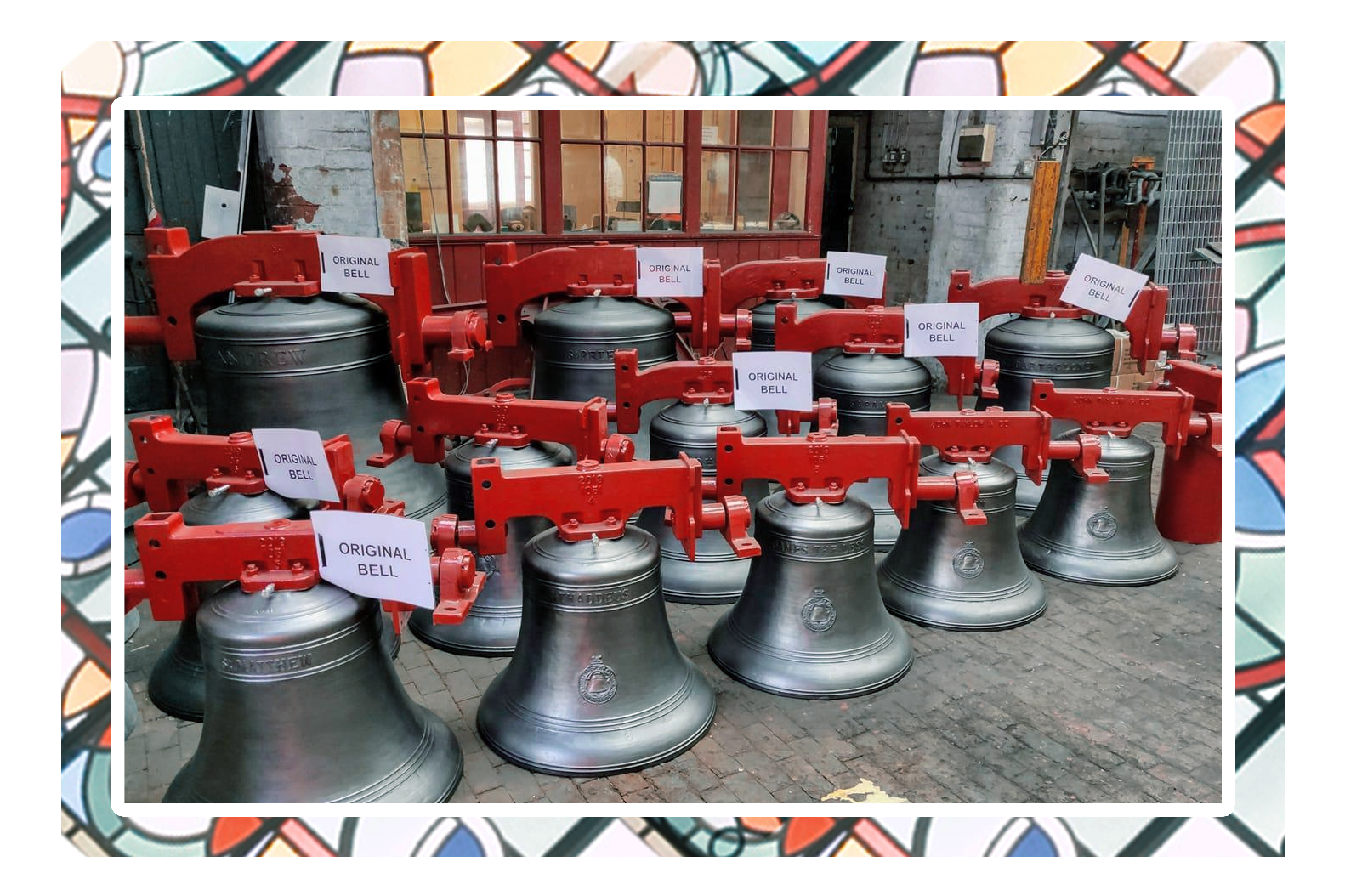
While eight bronze bells were gifted to SAC in 1889 by the family of Captain J.S.H. Fraser to commemorate the 70th anniversary of the founding of Singapore, the church’s bell-ringing ministry only started in August 2019 after a major refurbishment and five more bells were added.
Travelling all the way from England, the original bells were cast at John Taylor & Co Foundry in Loughborough, where the bells of St Paul’s Cathedral in London were also made
“These bells were given to us in the 19th century,” said Vivien Chen, SAC’s Director of Administration and Operations.
However, what they did not realise was that these were not meant to be stationary clapper bells (where the bell is hit by a striker inside the bell), but change ringing bells.
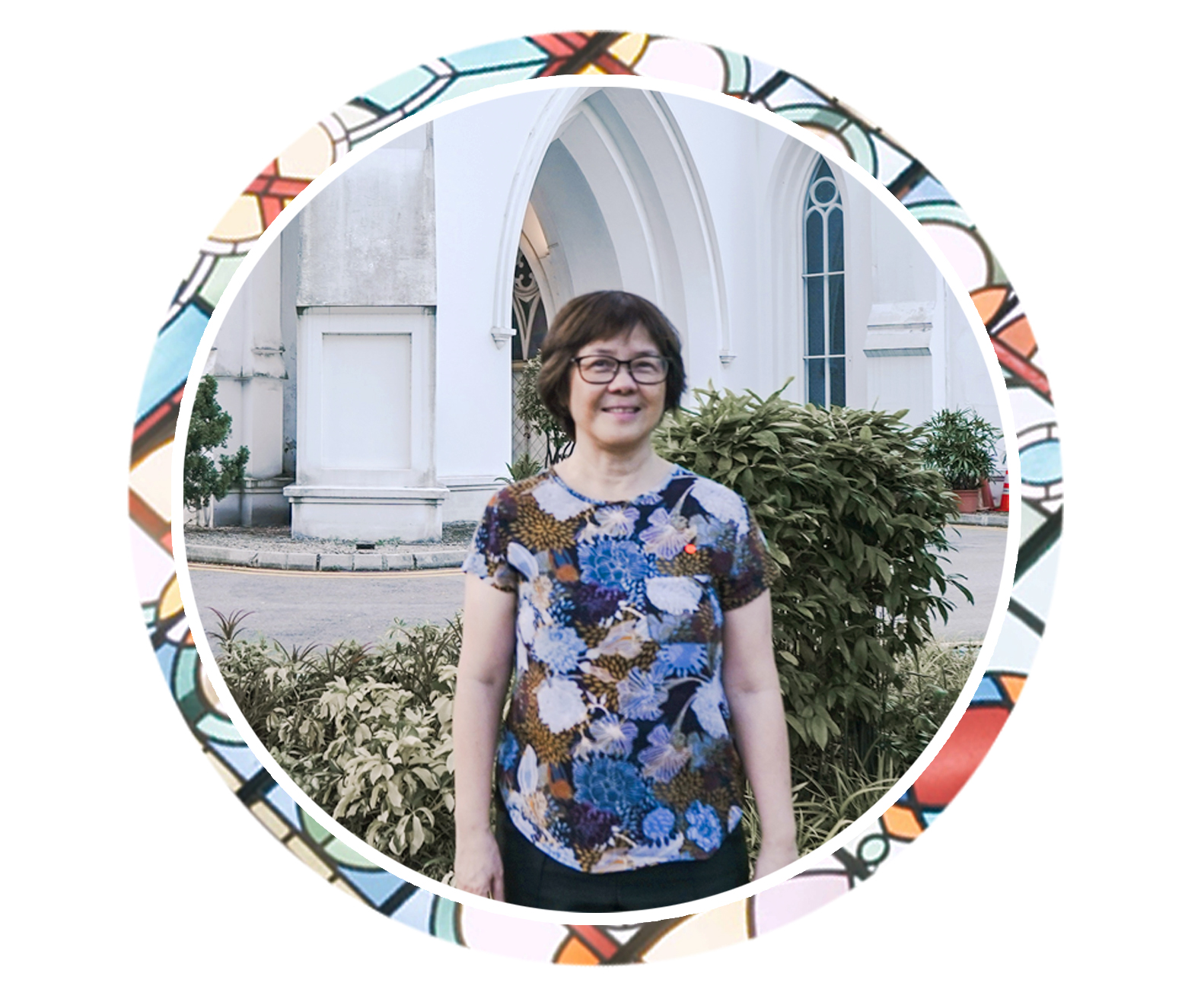
Unlike clapper bells, change ringing bells have to be rung by a team in a highly specific and controlled manner, which involves pulling on ropes to swing them 360 degrees, producing a complex cascade of sounds.
Change ringing also minimises the damage on the bells. Since stationary bells are struck at the same spot every time, they become brittle over time if hit incorrectly.
And so, for the next 130 years, everyone was none the wiser. Except for Laith Reynolds who had been on a mission to convert the church bells into a full swinging peal since 1973.
A bell enthusiast since his youth, Reynolds had been the captain of the band of bell ringers in St George’s Cathedral, Perth. Relocating to Jakarta in the 1980s for work, he often travelled to Singapore.
That was when he first discovered that the SAC’s bells were not being harnessed to its full potential.
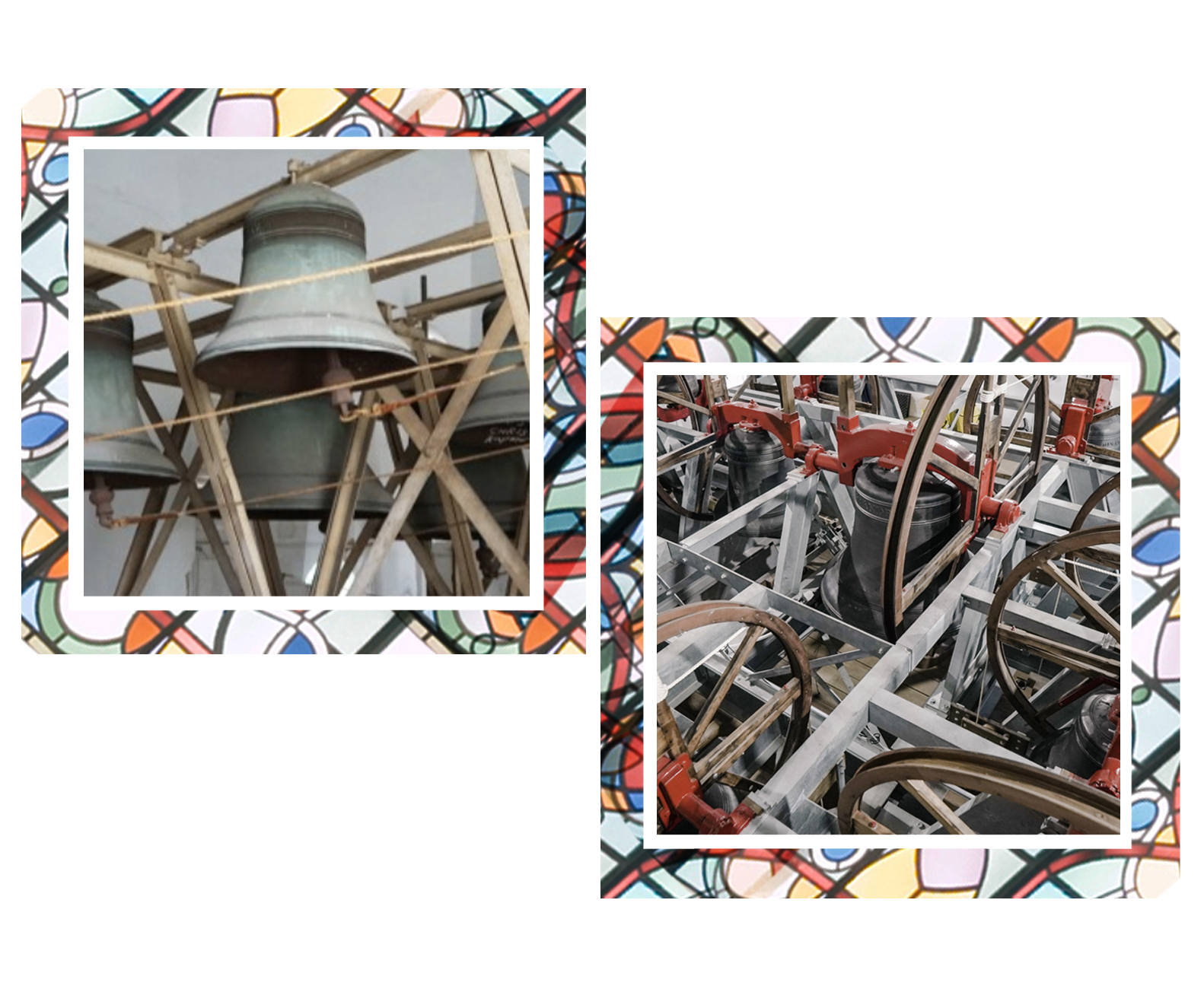
In an interview in 2019 with SAC’s magazine The Courier, Reynolds, now in his 70s, said: “In 1973, we came to the service here. I heard the bells, went up and saw what they were, I realised that they were cast to change ringing scale, and the bells in this huge tower were being chimed. So I started talking to the clergy.”
And talk he did. For the next 45 years, Reynolds would fly out to Singapore, trying to interest the committee in this project. But the timing was never right. Then finally, in November 2017, the seed that was sown began to take root.
“We were doing deep restoration of the monument and going through all the things we needed to do. Then I recalled someone talking about the bells,” Vivien said in a podcast. “And so, I said let’s go check out this person.”
That was when Vivien met up with Reynolds, together with the Vicar, Canon Terry Wong, and the steeple keeper, Kevin Quek, who takes care of the bell tower. The trio was excited when they heard about the story behind the bells.
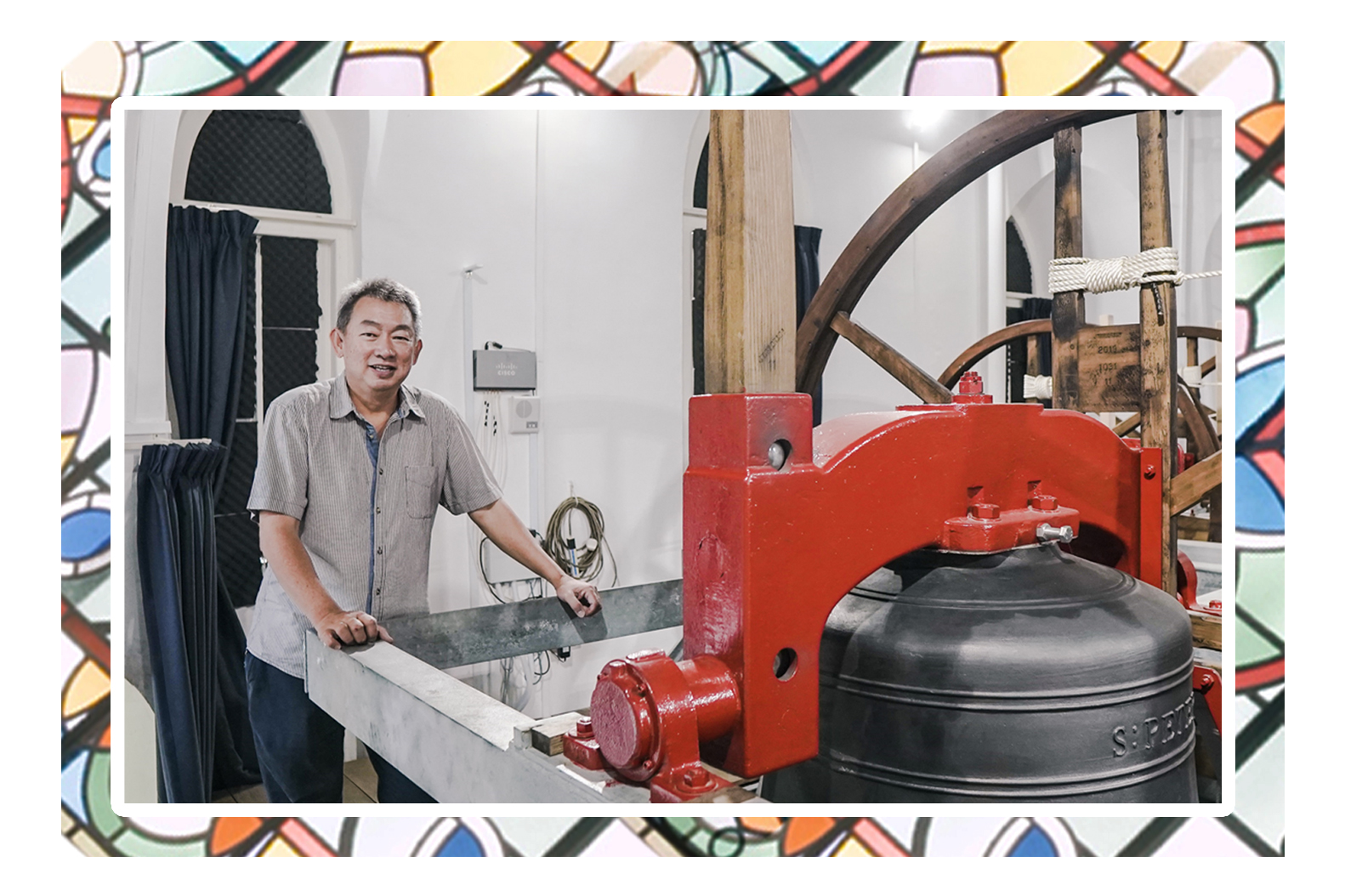
They discovered that one of the reasons why the bells were not installed as swinging bells could be the lack of knowledge on how to evaluate the tower back then.
Vivien reasoned: “Yes, there was expertise in England, but not here. Nobody knew how to ring it or hang it. It was probably sensible that they hung it in a way that the bells were fixed and didn’t move.”
But times are different now. Upon hearing this story, SAC decided to engage a structural engineer from the UK who specialises in bell towers to survey and inspect the building. He confirmed that the tower was more than adequate for change ringing bells, and was in fact built for such.
The bells are a call to prayer and worship.
Excitement started to build, and plans to rehang the bells began to take shape.
“When we talked to members about redoing the bells, it was something they all just gravitated to,” Vivien fondly recounted. “People were like, ‘Yes, of course! The bells are a call to prayer and worship.’ So they were very much for it.”
It was also an opportune moment because the second floor of the bell tower, which had been previously used to store organ pipes, was being cleared out. So that meant there was now a space to have a bell chamber to ring the bells properly.
It all simply fell into place.
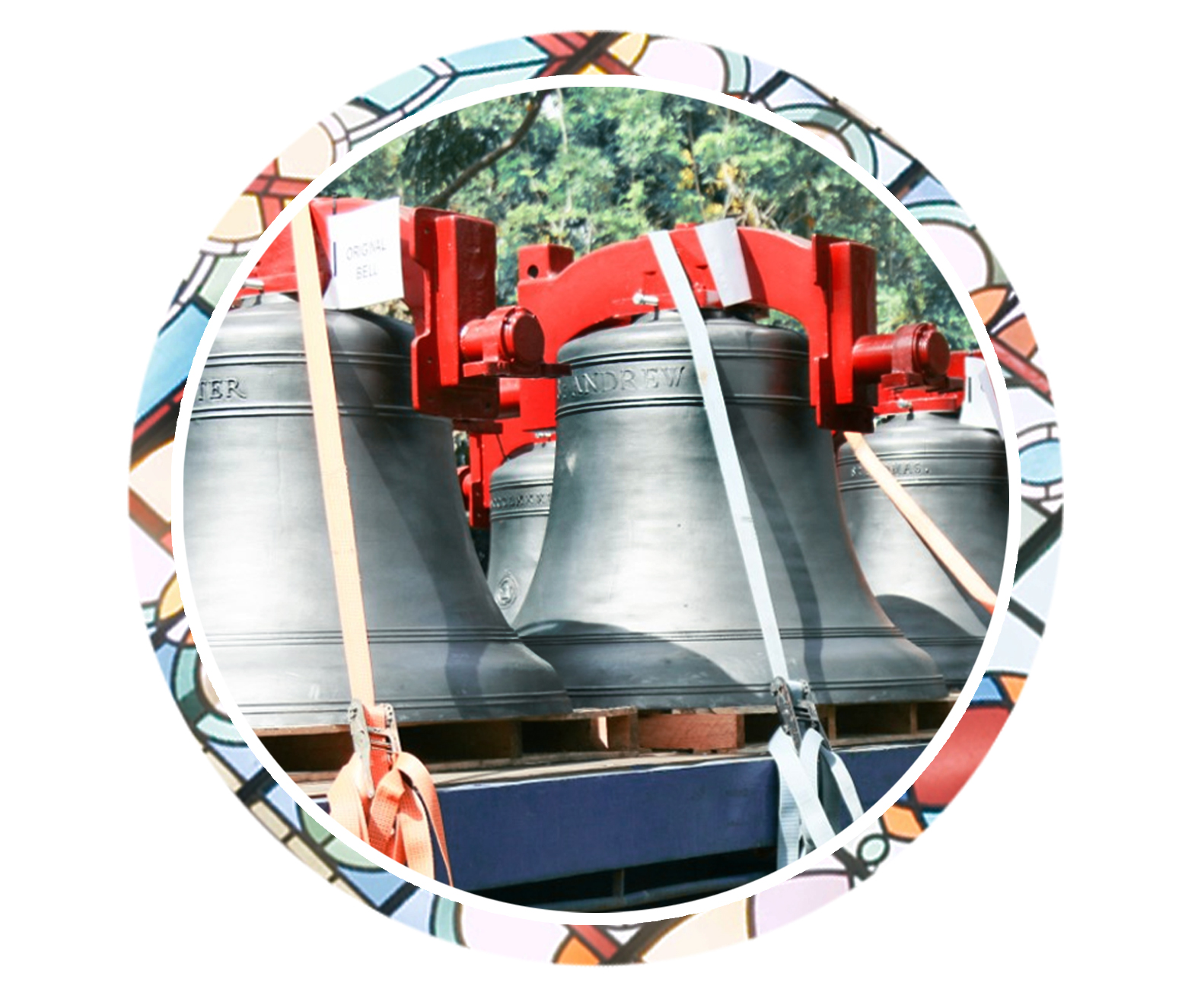
And so, fundraising for the refurbishment of the eight bells began. By January 2019, enough money was raised to not only restore the eight bells, but also to cast five more bells. All are named after the early apostles.
Finally in August 2019, Singapore became the first and only country in Southeast Asia to have a peal of working change ringing bells.
As nobody in the church was trained in the method of change ringing, Benjamin Tai, who now heads SAC’s bell-ringing ministry, told me that three of them flew down to Perth over a long weekend to start some pre-training.
“But most of our training came from very kind people either from the UK or Australia. They’d actually come down for two to three weeks at their own expense,” said Benjamin in gratitude.

The art of change ringing has a few components.
First, bells are rung by pulling on the rope attached to it. Ideally, the bells should be swung 360 degrees, which means one must be able to exert a very specific amount of force without damaging the stay – a wooden stick that keeps the bell upright and ready to be rung.
“You need to use constant and the exact amount of force. Different bells have different weights so you’ll need to be able to adjust your strength,” said Benjamin, reminding me that the weight of the bells ranges from 198.5kg to 1,297 kg.
Second, change ringing is a team effort to achieve a sequence called a peal. Every member takes charge of one bell and has to remember when it is their turn to ring. Teamwork is crucial, and it can easily take 45 minutes to ring just a quarter peal and up to four hours to ring a full peal.
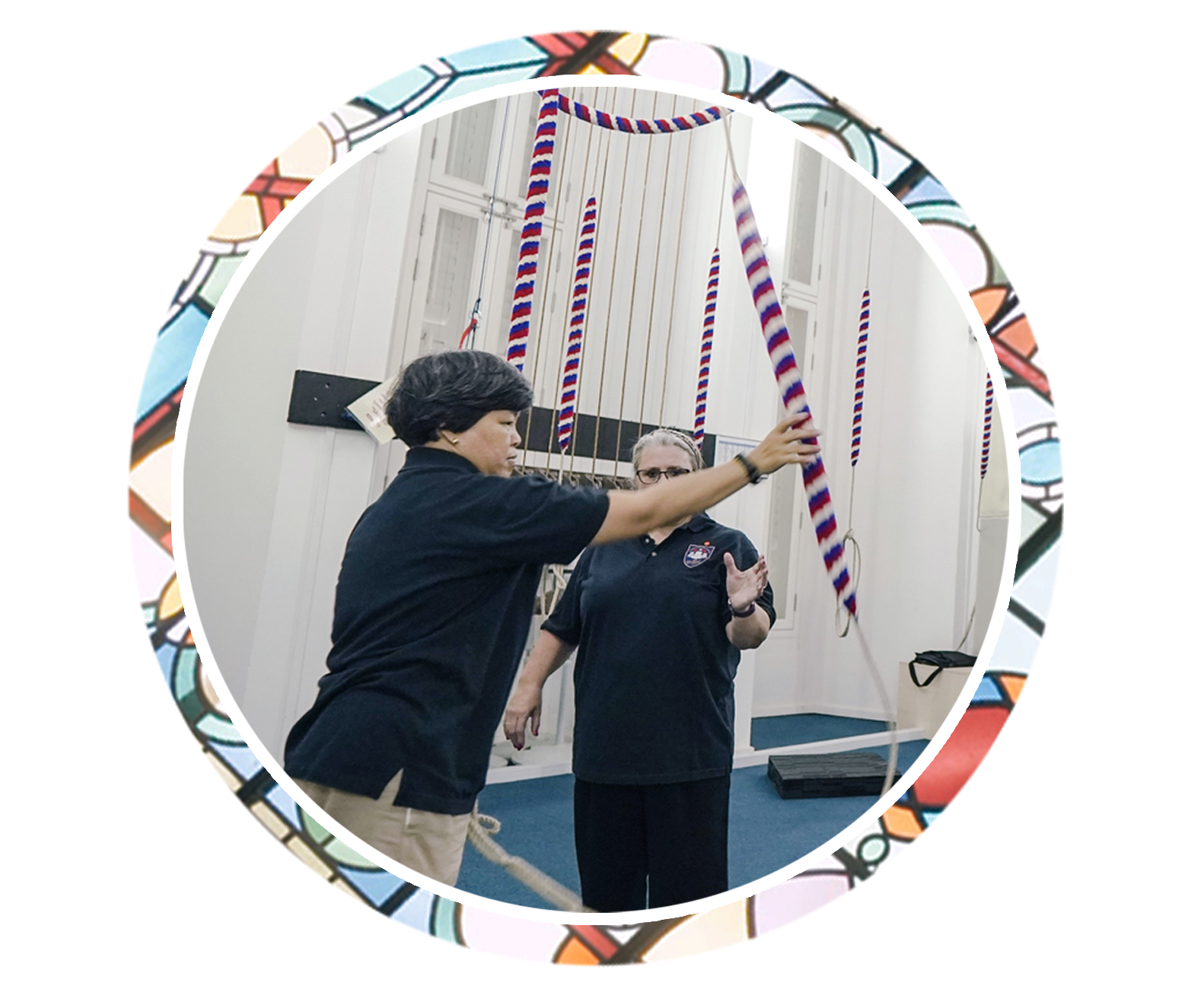
The timing of the completion of bells couldn’t have been better.
After more than four decades of persistence, the bells were finally ready in 2019 – just in time for a special Christmas Carol service that was held for Singapore’s Bicentennial year and attended by government leaders, including our Prime Minister.
And the excitement wasn’t just felt among SAC members. Around the globe, people began writing in to request to see the bells. Some also volunteered to teach the church members how to use the bells properly.
For now, the ministry is working towards ringing all the bells for their Easter dawn service. They are also anticipating doing the same for the consecration of the 10th Anglican Bishop, Canon Dr Titus Chung in October.
But more than what man has planned, God has a grander purpose: He is rousing His people to hear His clarion call.
“Bells are a call to worship. If we ring it well for God, it is our hope that people will be drawn to the church to know that the God of the universe is here, so come and worship Him,” said Benjamin.
So the next time you are near City Hall and hear the distant ringing of the bells, don’t forget to stop in prayer and worship. Because when you do, we will be praying together as one.
- Would you consider to set an alarm to remind yourself to pray every day for the nation at 12pm?
- Prayer points are available here.


